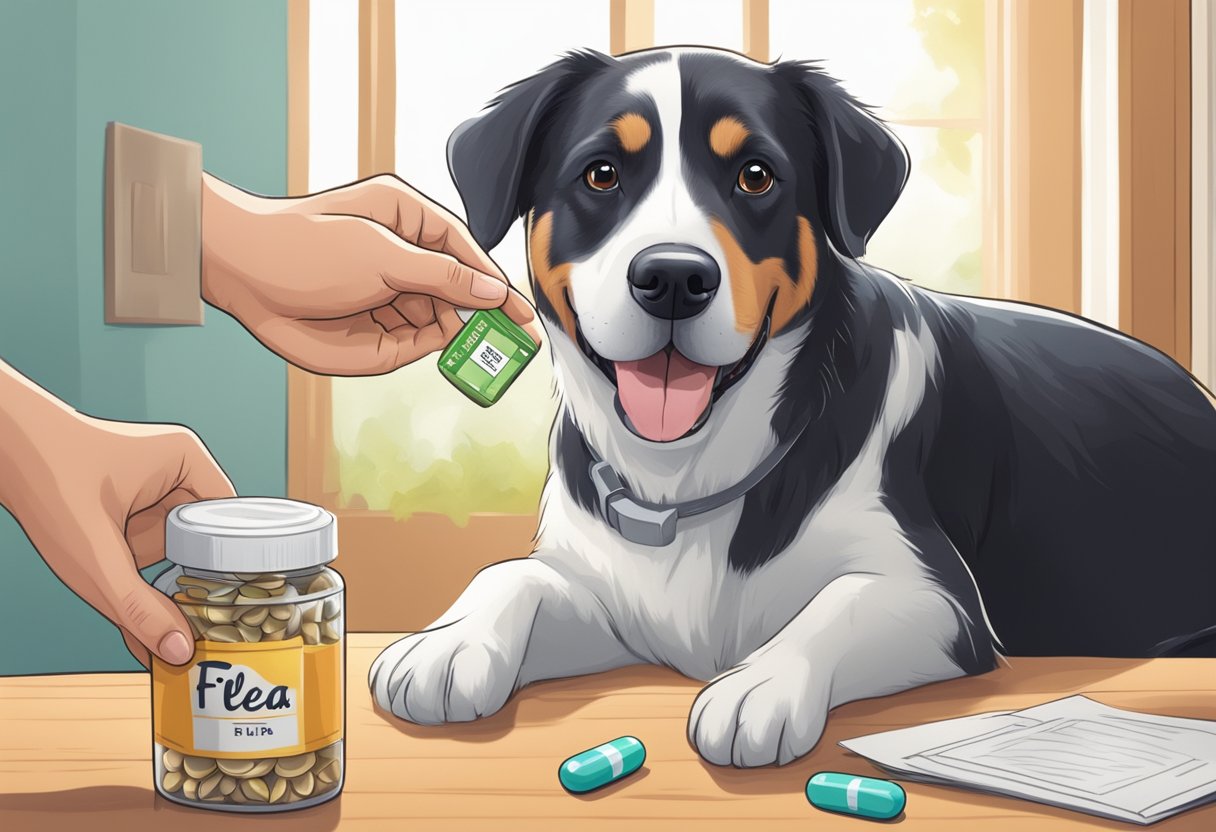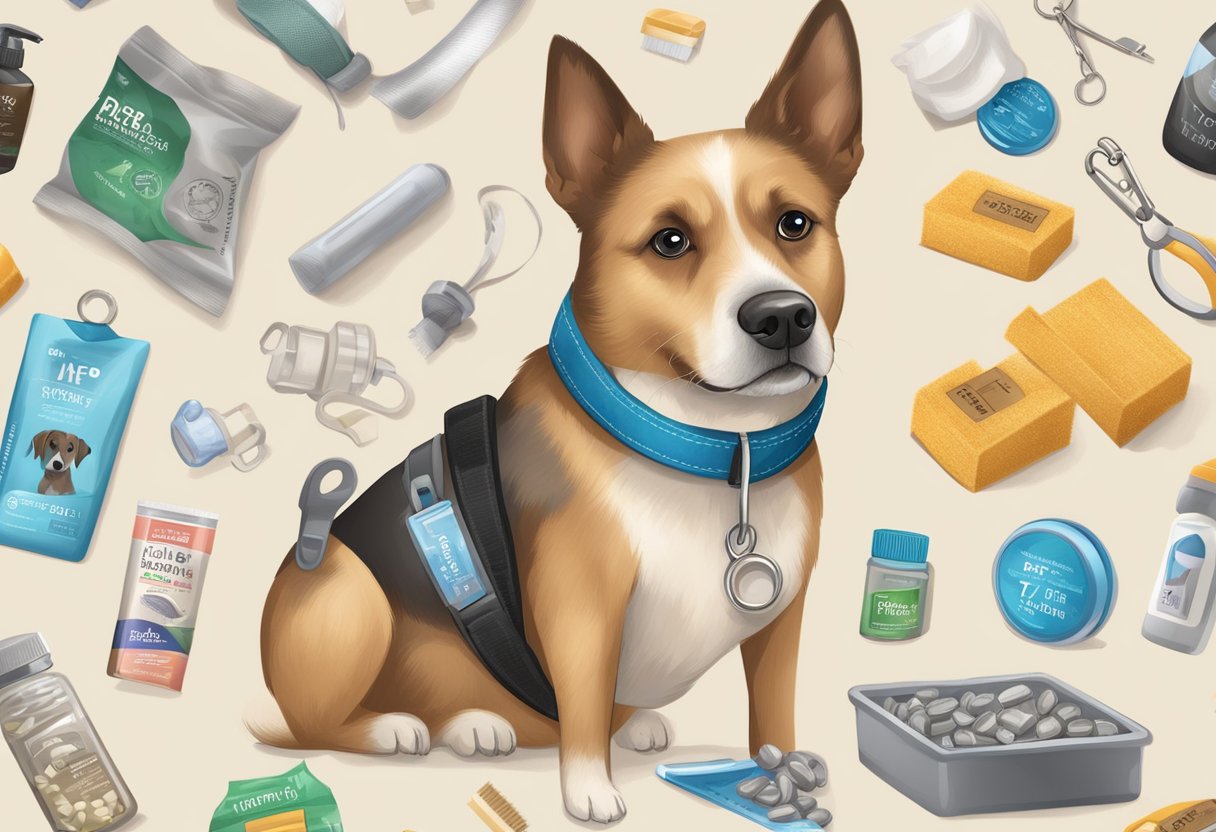Best Flea and Tick Prevention for Dogs: Expert Recommendations
Fleas and ticks are common parasites that can cause a lot of discomfort and health problems for dogs. Fleas can cause itching, skin irritation, and even anemia, while ticks can transmit serious diseases such as Lyme disease, Rocky Mountain spotted fever, and ehrlichiosis. To protect their furry friends from these pests, many dog owners turn to flea and tick prevention products.
There are many different types of flea and tick prevention products available, including topical treatments, oral medications, and collars. Each product has its own pros and cons, and the best option for a particular dog will depend on factors such as their age, weight, health status, and lifestyle. In this article, we will explore some of the best flea and tick prevention products for dogs on the market today, as well as some tips for choosing the right product for your furry friend.
Understanding Flea and Tick Prevention
Lifecycle of Fleas and Ticks
Fleas and ticks are external parasites that feed on the blood of dogs. Understanding their lifecycle is essential in preventing infestations. Fleas have four life stages: egg, larva, pupa, and adult. Ticks have three life stages: larva, nymph, and adult. Both fleas and ticks require a blood meal to progress through their lifecycle. They can lay hundreds of eggs at a time, leading to a rapid infestation.
Risks of Infestations
Flea and tick infestations can lead to various health problems for dogs. Fleas can cause skin irritations, anemia, and transmit tapeworms. Ticks can transmit Lyme disease, Rocky Mountain spotted fever, and other diseases. These diseases can cause fever, joint pain, and other symptoms. It’s essential to prevent flea and tick infestations to keep dogs healthy.
Types of Preventatives
There are various types of flea and tick preventatives available for dogs. These include topical treatments, collars, oral medications, and sprays. Topical treatments are applied to the skin and kill fleas and ticks on contact. Collars release a chemical that repels and kills fleas and ticks. Oral medications are given to dogs and kill fleas and ticks when they bite the dog. Sprays are applied to the dog’s coat and repel and kill fleas and ticks. It’s essential to choose the right preventative based on the dog’s age, weight, and health status. Some preventatives are not suitable for puppies or dogs with certain health conditions.
In summary, understanding the lifecycle of fleas and ticks, the risks of infestations, and the types of preventatives available is essential in preventing flea and tick infestations. It’s crucial to consult with a veterinarian to choose the right preventative for the dog and use it consistently to keep the dog healthy.
Topical Treatments
Topical treatments are the most commonly used flea and tick prevention methods for dogs. They are easy to apply and often provide long-lasting protection. Here are some of the most effective topical treatments available:
Spot-On Medications
Spot-on medications are applied directly to the skin between the dog’s shoulder blades. They are absorbed into the dog’s bloodstream and provide long-lasting protection against fleas and ticks. Some of the most popular spot-on medications include:
- Advantage II for Dogs: This medication kills fleas, flea eggs, and larvae, as well as lice and ticks. It is waterproof and provides protection for up to 30 days.
- Frontline Plus for Dogs: This medication kills fleas, flea eggs, larvae, and ticks. It is waterproof and provides protection for up to 30 days.
- K9 Advantix II for Dogs: This medication kills fleas, ticks, and mosquitoes. It is waterproof and provides protection for up to 30 days.
Shampoos and Powders
Shampoos and powders are another effective way to prevent fleas and ticks. They are easy to use and provide immediate relief from itching and irritation. Some of the most popular shampoos and powders include:
- Adams Plus Flea and Tick Shampoo: This shampoo kills fleas, ticks, and lice, as well as prevents flea eggs from hatching. It also contains ingredients to soothe and moisturize the skin.
- Sentry Flea and Tick Shampoo with Oatmeal: This shampoo kills fleas, ticks, and lice, as well as soothes dry, itchy skin. It contains oatmeal to help moisturize and protect the skin.
- Hartz UltraGuard Plus Flea and Tick Powder: This powder kills fleas, ticks, and lice, as well as prevents flea eggs from hatching. It can be used on dogs and puppies over 12 weeks of age.
Sprays
Sprays are a convenient way to prevent fleas and ticks. They can be applied directly to the dog’s coat and provide immediate relief from itching and irritation. Some of the most popular sprays include:
- Vet’s Best Flea and Tick Home Spray: This spray kills fleas, ticks, and mosquitoes, as well as repels other pests like ants and roaches. It is made with natural ingredients and can be used on dogs and puppies over 12 weeks of age.
- Wondercide Flea and Tick Spray: This spray kills fleas, ticks, and mosquitoes, as well as repels other pests like flies and gnats. It is made with natural ingredients and can be used on dogs and puppies over 12 weeks of age.
- Adams Plus Flea and Tick Spray: This spray kills fleas, ticks, and lice, as well as repels mosquitoes. It can be used on dogs and puppies over 12 weeks of age.
Oral Medications
When it comes to flea and tick prevention for dogs, oral medications are a popular choice among pet owners. These medications are easy to administer and provide long-lasting protection. There are two types of oral medications available for dogs: chewables and pills.
Chewables
Chewable tablets are a tasty treat that dogs can easily consume. They are available in different flavors, and some even have a beef or chicken flavor to make them more appealing to dogs. Chewables work by killing fleas and ticks when they bite the dog. The medication is absorbed into the dog’s bloodstream and distributed throughout the body, killing any fleas and ticks that come into contact with the dog’s skin.
One popular chewable medication is NexGard. It is a monthly chewable that provides protection against fleas and ticks. Another option is Bravecto, which provides protection for up to 12 weeks with just one chewable tablet.
Pills
Pills are another type of oral medication that can be used for flea and tick prevention in dogs. These medications work by preventing fleas and ticks from reproducing. They do not kill existing fleas and ticks, but they prevent new infestations from occurring.
One popular pill medication is Sentinel. It is a monthly pill that not only prevents flea and tick infestations but also protects against heartworms and other intestinal parasites. Another option is Comfortis, which is a monthly pill that provides protection against fleas.
It is important to note that some oral medications may have side effects, such as vomiting, diarrhea, or loss of appetite. Pet owners should consult with their veterinarian to determine which oral medication is best for their dog and to discuss any potential side effects.
Collars and Tags
Flea and tick collars and tags are a popular choice for many dog owners as they offer a convenient and long-lasting solution to flea and tick prevention. However, it’s important to choose the right type of collar or tag for your dog’s specific needs and preferences. Here are the three main types of collars and tags:
Chemical Collars
Chemical collars are the most common type of flea and tick collar. They work by releasing a small amount of pesticide onto your dog’s skin to kill fleas and ticks. These collars are effective for up to 8 months and are easy to use. They are also relatively inexpensive compared to other flea and tick prevention options.
However, some dogs may be sensitive to the chemicals used in these collars, and they may cause skin irritation or other side effects. It’s important to monitor your dog for any adverse reactions and to follow the manufacturer’s instructions carefully.
Natural Oil Collars
Natural oil collars are a newer type of flea and tick collar that use essential oils to repel fleas and ticks. These collars are a good choice for dogs who are sensitive to chemical pesticides or for owners who prefer a more natural approach to flea and tick prevention.
However, it’s important to note that natural oil collars may not be as effective as chemical collars, and they may need to be replaced more frequently. Additionally, some essential oils can be toxic to dogs in large amounts, so it’s important to choose a collar that uses safe and non-toxic oils.
Ultrasonic Tags
Ultrasonic tags are a non-chemical option for flea and tick prevention. These tags emit high-frequency sound waves that are supposed to repel fleas and ticks. They are easy to use and are a good choice for dogs who are sensitive to chemical pesticides.
However, the effectiveness of ultrasonic tags is still debated, and there is limited scientific evidence to support their use. Additionally, some dogs may be bothered by the high-frequency sound waves, so it’s important to monitor your dog for any signs of discomfort.
Overall, flea and tick collars and tags can be an effective and convenient option for dog owners. However, it’s important to choose the right type of collar or tag for your dog’s specific needs and to follow the manufacturer’s instructions carefully.
Environmental Control
Environmental control is an essential component of flea and tick prevention for dogs. By taking measures to control fleas and ticks in your home and yard, you can reduce the risk of infestations and protect your dog from these pesky parasites.
Home Treatments
To control fleas and ticks in your home, you should vacuum regularly and wash your dog’s bedding frequently. Vacuuming helps to remove eggs, larvae, and pupae from carpets, rugs, and furniture, while washing bedding helps to kill any fleas or ticks that may be present. You can also use a flea comb to remove fleas from your dog’s coat manually.
Another effective home treatment is diatomaceous earth. This natural powder can be sprinkled on carpets, furniture, and other areas where fleas and ticks may be present. The powder works by dehydrating the parasites, causing them to die. However, it is important to choose food-grade diatomaceous earth, as other types may be harmful to your dog.
Yard Treatments
To control fleas and ticks in your yard, you should keep your grass and shrubs trimmed short and remove any debris, such as leaves and branches, where fleas and ticks may hide. You can also use nematodes, which are microscopic worms that feed on fleas and ticks. These worms are safe for pets and humans and can be purchased at most garden centers.
Another effective yard treatment is insecticide sprays. These sprays can be applied to your yard to kill fleas and ticks and prevent them from returning. However, it is important to choose an insecticide that is safe for pets and follow the manufacturer’s instructions carefully.
By taking these measures to control fleas and ticks in your home and yard, you can reduce the risk of infestations and protect your dog from these pesky parasites.




